Weapons and armor are the bread and butter of crafting in Monster Hunter, letting you repurpose the parts of slain foes into powerful equipment. There’s an unsung hero in the mix as well, though, that being Talismans. Once you pass certain points in the game, you’ll have access to the Melding Pot, letting you put together these supplementary pieces of gear and grant access to more skills and skill levels.
While you can start making Talismans fairly early on in Monster Hunter Rise, the time where Melding becomes focal is usually the end game, when you have a surplus of materials and at least one dedicated weapon and armor set. We’ll be going over efficient ways to grind Talismans, when you unlock new Melding methods, as well as skills to look out for once you’re grinding post-story.
How to meld Talismans in Monster Hunter Rise
Talisman melding is handled with the merchants, either Kagero in Kamura Village or felyne Maido in the Gathering Hub. After certain, set points you’ll have access to the Melding Pot as an option with these two NPCs. Initially you’ll be limited in what you can meld, with new methods being unlocked as you progress in Village and Hub quests – more on that further down.
As for how to meld, you’ll need to pay Kamura Points put in monster materials. You’ll be presented with a large list of skills, and each will have an associated Rate of Earning Skill. This can be seen in the top-right corner. In the below screenshot, you can see Horn Maestro has a 70% chance of being melded onto a Talisman. This means when you try and make a Horn Maestro Talisman, there’s only a 70% chance it’ll turn out that way.
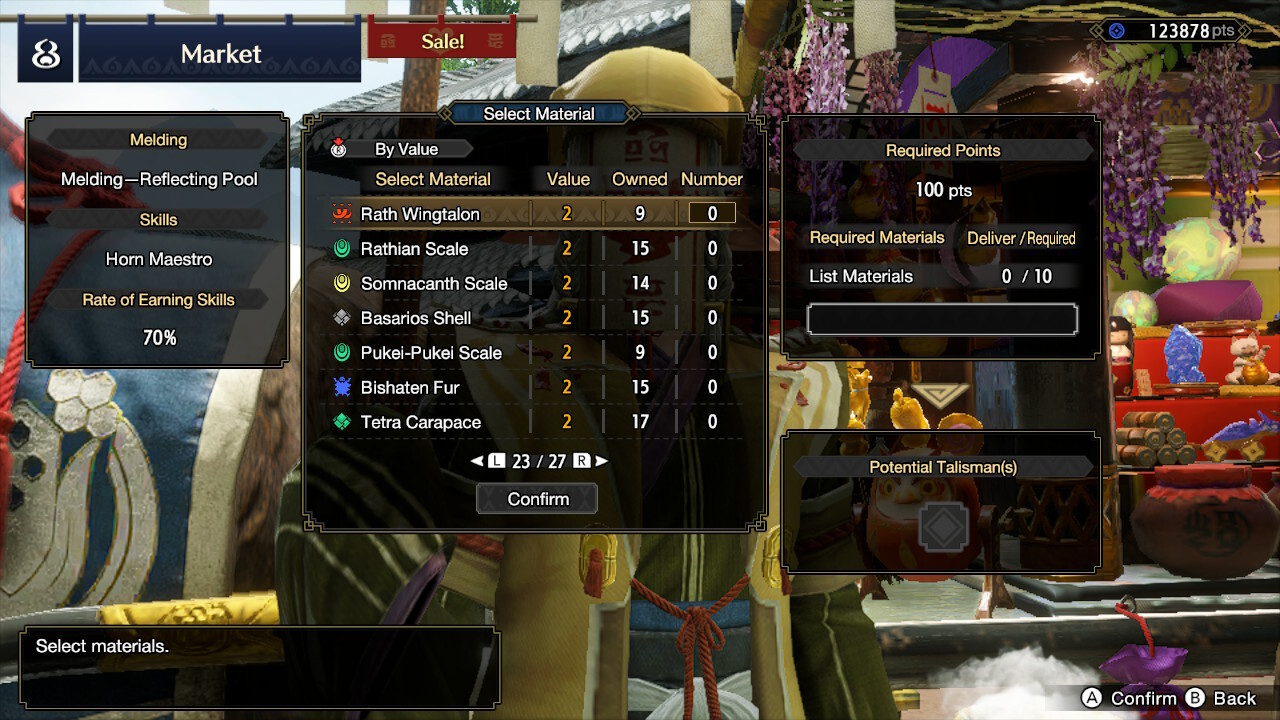
Worry not when it comes to wasted melds, though. Even if you don’t get Horn Maestro (or whichever skill you’re going for) on your Talisman, you’ll still get something. Likewise, melding the same Talisman multiple times could result in different outcomes for that skill. These translate to Decoration slots, or additional skills being present on the Talisman and incentify repeat meldings.
As for choosing which monster materials to use, there’s really no wrong answer. Different types of melding pull from different pools of materials, with more desirable skills being locked behind High Rank monster drops. Every materials has a point value, and every potential Talisman melded has a point “cost”.
You’ll have to use materials that total the cost to generate a Talisman. Make sure to get this number exactly, as there’s no benefit to going over. That said, if a melding type lets you meld multiple Talismans at once you only have to be exact on the last Talisman of that batch. You’re also able to have multiple meldings in process at once!
Once this is all set up, it’s time to go on some Quests! A meld (or batch of melds within the same melding type, if multiple are set up) will complete after a single quest is completed. Certain gathering quests can be completed extremely quickly, so if you’re well stocked on materials then that’s the most efficient way to go.
When do you unlock Melding/Talismans in Monster Hunter Rise?
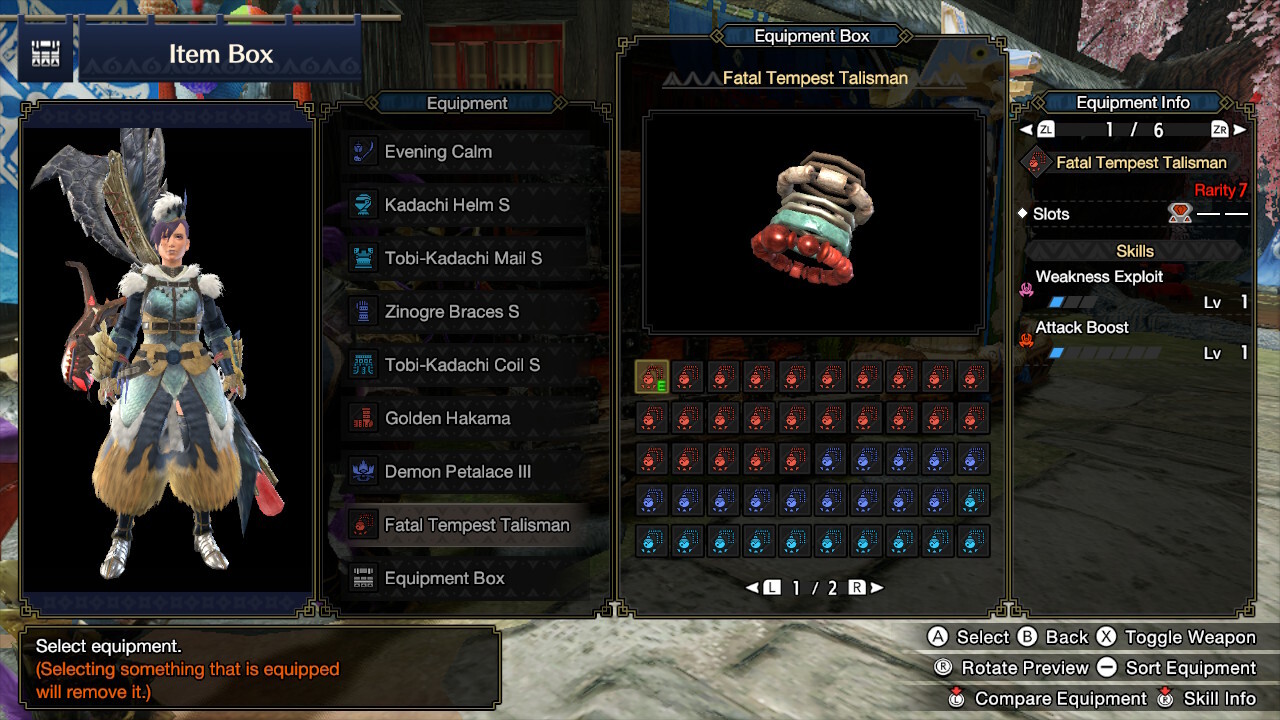
As mentioned, there are multiple types of melding in Monster Hunter Rise and each has various differences. This includes available skills, success rates of those skills, number of Talismans you can meld at once, and which monster materials are allowed. Each of these melding types is unlocked at different points in the game:
- Reflecting Pool: Complete 5 Star Village Quest Comeuppance or 3 Star Hub Quest Hellfire
- Haze: Complete 5 Star Hub Quest The Restless Swamp
- Moonbow: Complete 7 Star Hub Quest Can’t Kill it With Fire
- Wisp of Mystery: Complete the 7 Star Hub Quest featuring the story’s final boss
- Rebirth: Complete the 7 Star Hub Quest featuring the story’s final boss
Reflecting Pool and Haze will each allow you to only meld one Talisman at a time. Moonbow will allow you to instead meld three at a time, while Wisp of Mystery will allow you to meld five. Rebirth works completely differently, which we’ll go into further down. As you progress in the game and unlock these tiers, the amount of melding requests you can have in process will increase, up to a maximum of ten once you unlock Wisp of Mystery and Rebirth.
Melding – Reflecting Pool (uses all Low Rank and early High Rank materials)
This is the first type of melding you’ll have access to, and is the most straight forward. Success rates here are fairly high, making for a safe investment as you find your footing as a hunter. A bulk of its available skills are based on resisting certain elements and status effects. You also have access to useful gathering skills like Botanist and Geologist, which can help you build up reserves or plants and ore. There are also some more weapon-specific skills here, like Horn Maestro for Hunting Horn or Bombardier for any weapon with access to explosives such as the Gunlance. Other good, all-purpose skills here include Constitution, Recovery Up, and Fortify.
Melding – Haze (uses late Low Rank and all High Rank materials)
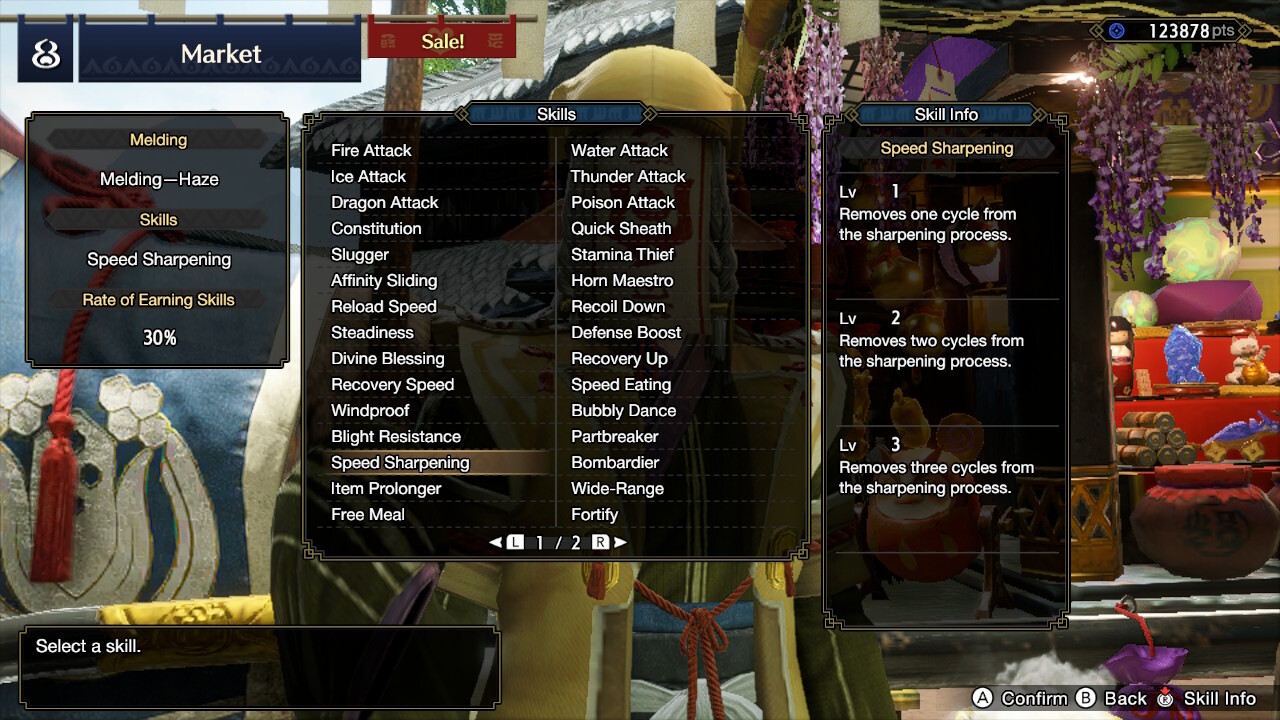
As you make your way into the tougher High Rank hunts, you’ll gain access to the Haze level of melding. You’ll likely have a weapon or armor set you’re attached to at this point, meaning you can work on complimenting that with a Talisman, hopefully with some Decoration slots. Success rates are quite a bit lower at this point, meaning it may take some time before you get something ideal here. However, I’d advise against using most High Rank materials here as they will be much more useful in the next two melding types.
Talismans at this stage are generally outclassed eventually as well in a different way, as many of the better ones can more easily be crafted as Decorations. Still, if you have materials to burn or have a particular set up in mind there’s nothing wrong with getting access to it a bit sooner. Various Elemental/Status Attack skills are now available, as are some skills that will help Bowgun users like Recoil Down, Reload Speed and Steadiness. If you’re using a weapon that gains benefits on being drawn, such as the Great Sword, then consider Quick Sheath.
If you’re interested in getting the most out of hunts, Partbreaker can get you some extra materials more easily if you focus on the right areas of monsters and Slugger and Stamina Thief will stun/exhaust them more easily for free hits. Some of the skills mentioned in Reflecting Pool are also available at this level as well, with the lower success rate giving way to better Decoration slot/extra skill rates.
Melding – Moonbow (uses mid High Rank materials and higher only)
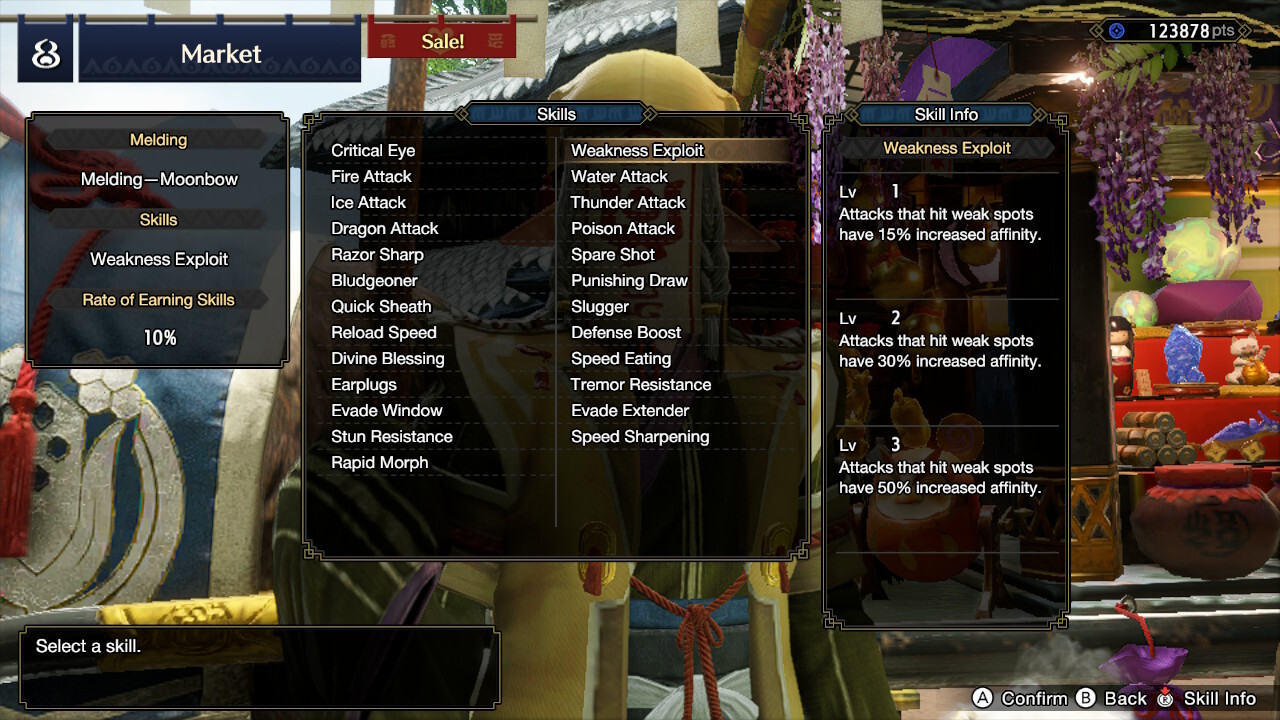
Moonbow is where Talismans start to open up, as certain desirable skills are now available. Some of these can’t be crafted as Decorations or are only on late-game gear based on tougher monsters. Just like with the transition from Reflecting Pool to Haze, some skills from the last melding level will be present here with different success rates. That said, Talismans from Moonbow are even more likely to have additional skills and Decoration slots.
The most notable skill here is Weakness Exploit. Its low success rate speaks volumes of its usefulness. It won’t be able to reach its full potential at this melding level, but if you want to focus on getting a Talisman with it asap then this is the way to do it.
Other great skills (with the same success rate and rationale) here include Razor Sharp, Spare Shot, and Critical Eye. Of them, only Critical Eye can be made as a Decoration instead. Still, the gap between unlocking this melding level and the final ones is fairly short, and you’ll soon see why they’re much more worth your time and resources.
Melding – Wisp of Mystery (uses mid High Rank materials and higher only)
Unlike the previous melding level, Wisp of Mystery works in a different way. You’re able to create five Talismans at once, however the skill is always random. This might sound risky and annoying, however the higher yield isn’t the only benefit. Wisp of Mystery has the widest variety of skills, including some of the most valuable in the game, and also has possibilities for extra skill levels on them as well as up to three Decoration slots.
Currently one of the most sought after Talismans is one with two levels of Weakness Exploit, as well as multiple Decoration slots. Even if you can specifically go for Weakness Exploit on Moonbow, it isn’t possible to get it with multiple skill levels at that tier. It’s not all about getting this one Talisman either, though.
Even if a Talisman doesn’t have skills that will be useful to you or your build, you may end up with one that has enough Decoration slots to turn it around. Suddenly that “useless” Talismans is an Attack Boost level 2 (with enough grinding for the Decorations’ materials, of course). I’ve also gotten many Talismans from Wisp that max out a skill on its own, such as Divine Blessing or Flinch Free.
The higher yield and better results generally make Wisp of Mystery the best melding option. Unfortunately, for anything random, you will end up with excess that isn’t so useful. It’s entirely possible to get low level Talismans here, or ones with skill combinations that don’t suit you at all.
That’s where Rebirth comes in.
Melding – Rebirth (uses Talismans)
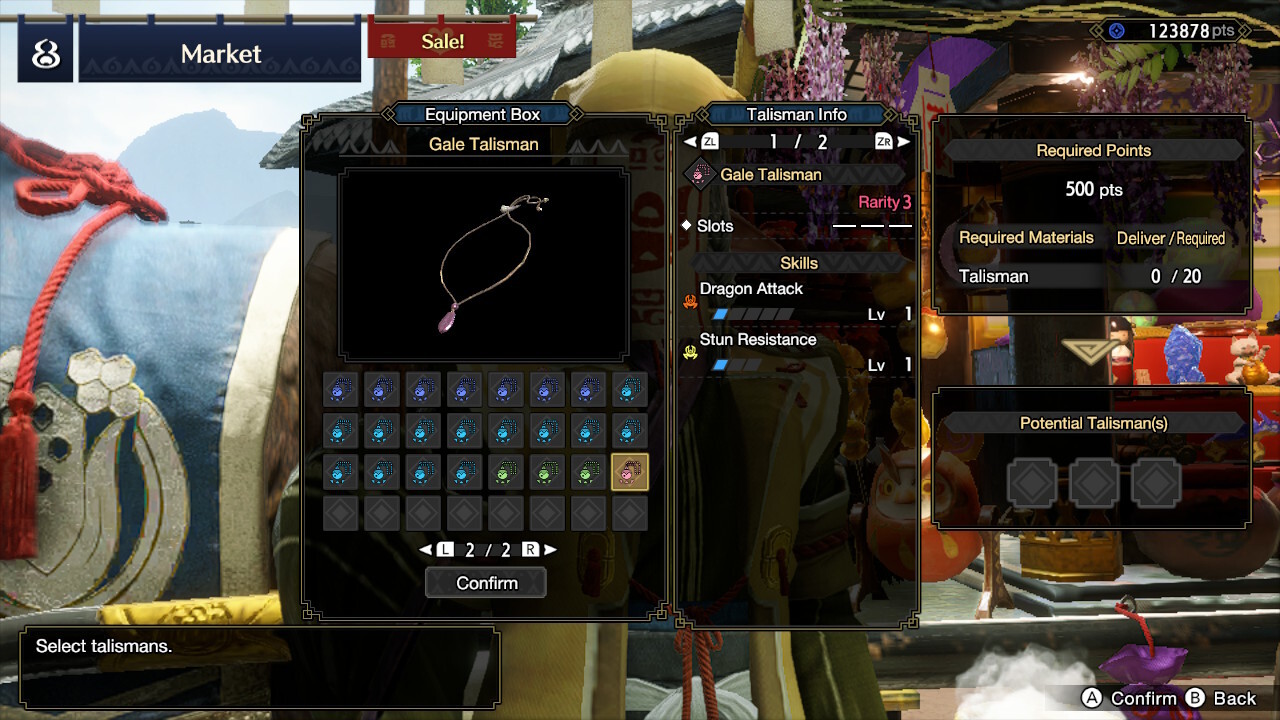
Yes, you read that right. Rebirth allows you to take Talismans you don’t want or need and recycle them. By giving up Talismans, you will be able to meld three new ones in their place. These reborn Talismans have the potential to be as good as those from Wisp of Mystery, and help keep down inventory clutter to boot.
Again, results here are at random. It’s also only particularly viable once you’re generating Talismans at the kind of rate that Wisp of Mystery allows (that being five Talismans for every one hunt). That sort of mass melding will take lots of materials, though, and we’ve got some advice on how to get them.
How to farm Talismans in Monster Hunter Rise
In my experience, there are two main ways to farm materials for Talisman melding – Rampage quests and hunting the final boss. For the final boss, the materials it drops are all supply a lot of points for melding Talismans (not to mention the most zenny from any one quest) and once you have the hang of its unique mechanics can be cleared reliably and without much difficulty. To be able to meld at this level you’ll have to have defeated it once already, so you’ll know how viable this is for yourself.
Rampages on the other hand make melding easier in a different way. Not only will the myriad monsters attacking give you a variety of materials (though none as singularly valuable as those from the final boss), you’ll also gain Defender Tickets.
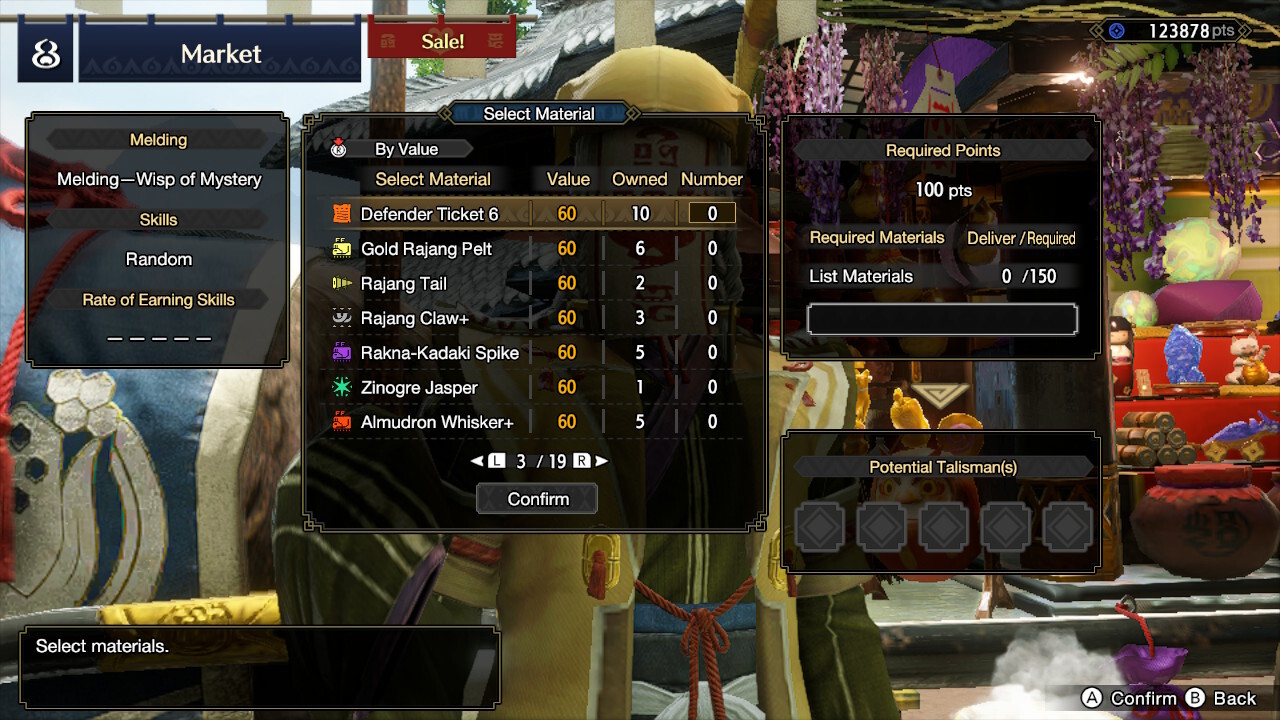
The Defender Ticket 6, for example, gives a whole 60 points on its own. That’s nearly half a Wisp of Mystery Talisman right there. High Rank Rampages will have Defender Tickets 7, 6, and 5 as drops; all of which are valuable for melding and usually are gifted in batches of multiple tickets per Rampage. You’ll want to make sure you’re running a Rampage that has these as rewards, though, as any ticket below Defender Ticket 5 does not qualify for Wisp of Mystery melding.
If you happen to run any more standard quests during this (perhaps to chase a specific material or make the most of a certain dango order), be sure to take advantage of Wyvern Riding to maximize your gains as well. By riding all present monsters and attacking each of them in turn while mounting another, you can guarantee nine extra shiny drops – three per monster.
As touched on earlier, it only takes a single quest to complete a batch of melds and you can (eventually) have ten batches going at once. A single High Rank Rampage has usually been enough for me to set up two full Wisp of Mystery batches while still being fairly conservative with my materials for other crafting purposes. With a few sessions of grinding, you’re looking at 50 Talismans in the works at once, not counting any melded as you grind or potential Rebirths.
More Monster Hunter Rise guides
Looking for more help with Monster Hunter Rise? Check out our other guides!









